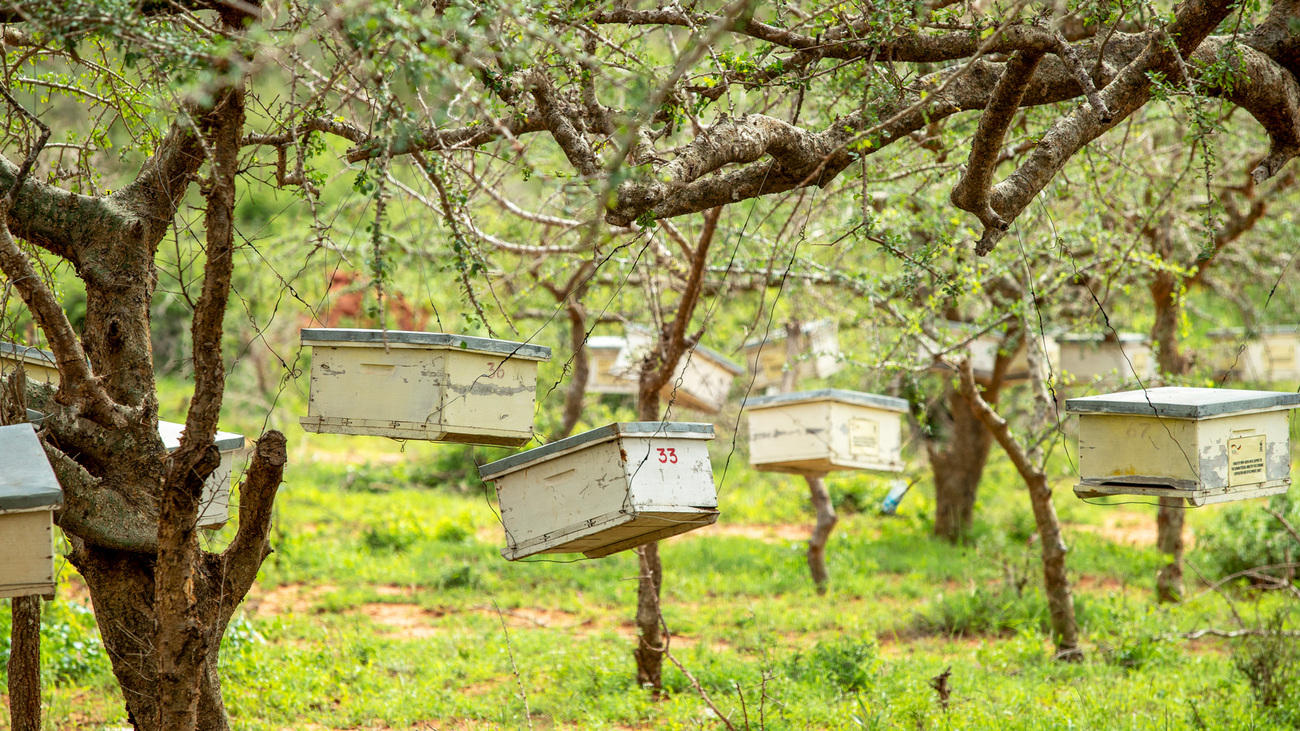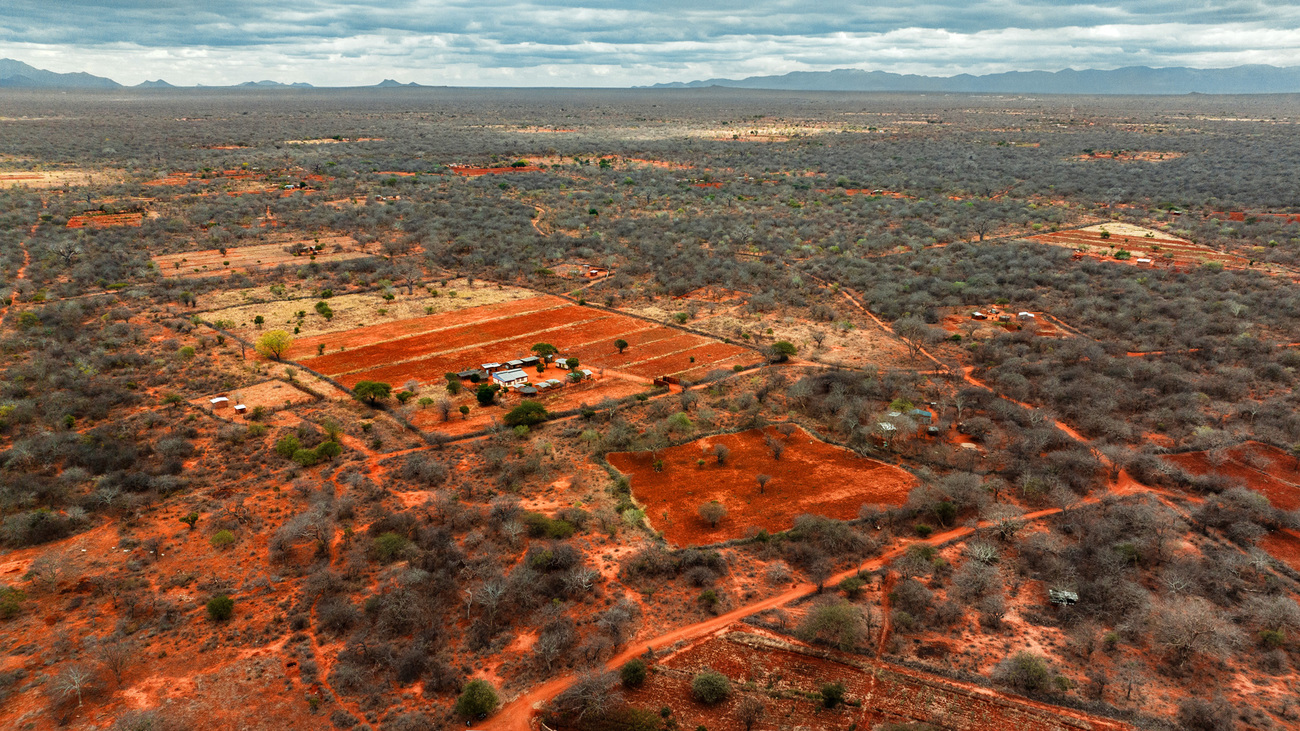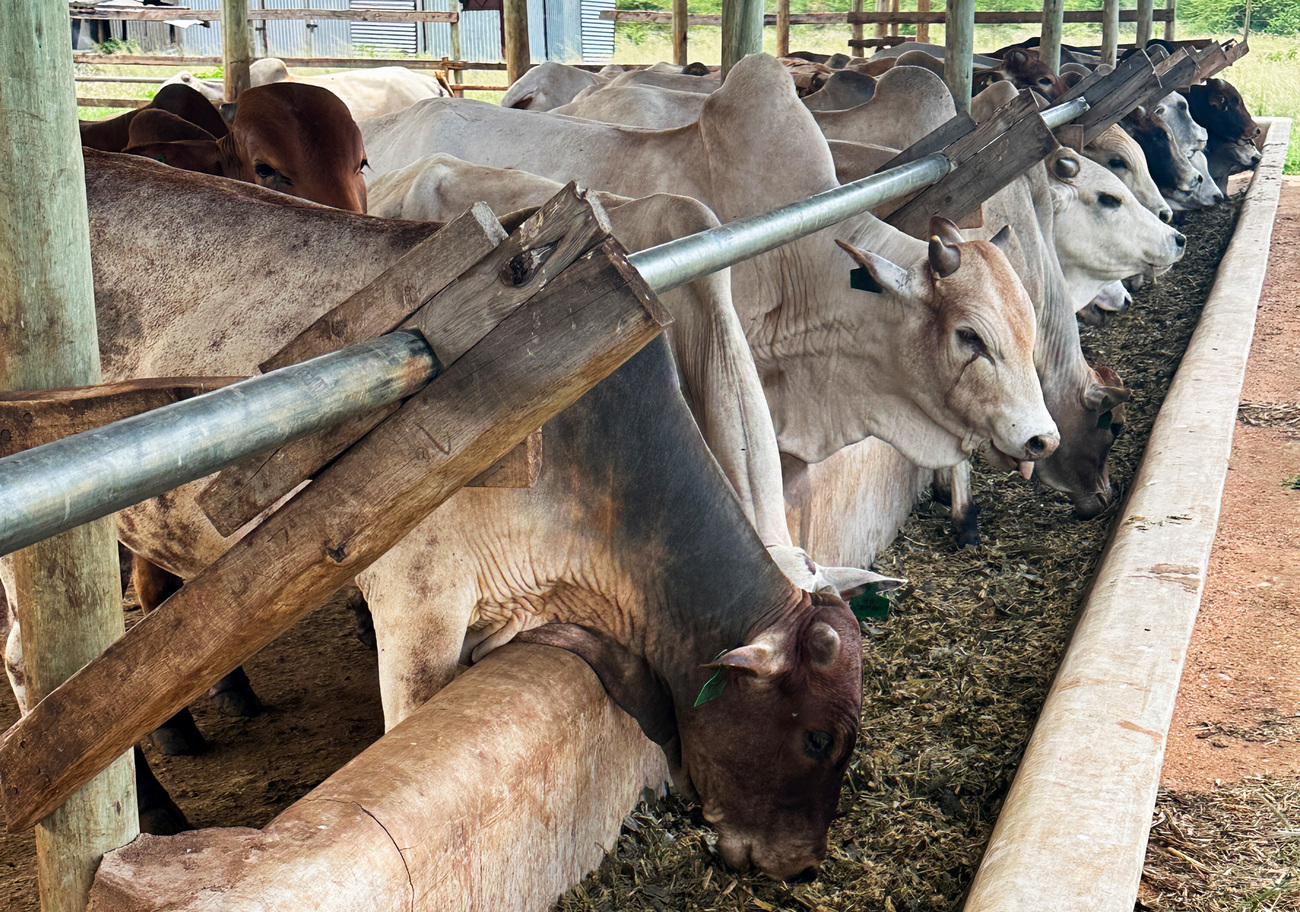John Kogada
Tsavo East Conservancy uses agri-business to strengthen the community and landscape
Tsavo East Conservancy uses agri-business to strengthen the community and landscape
A collaborative initiative by USAID and IFAW, managed by the Taita Taveta Wildlife Conservancies Association (TTWCA), is enhancing the resilience of the Kasigau Conservancy against climate change, boosting incomes, reducing human-wildlife conflicts, and rejuvenating a vital habitat for Tsavo elephants—all key goals of IFAW’s Room to Roam initiative.

Inhabitants of the Taita Hills, major shareholders in the conservancy, manage their livestock on community lands next to Tsavo East National Park. These cooler, wetter regions support arable farming while the adjacent lowlands house the expansive 52,300-acre Kasigau Conservancy, home to over 3,000 members.
Recent years have seen this ecosystem under severe strain from climate risks and increasing human and livestock populations, leading to overgrazing, habitat degradation, and food insecurity. Intense droughts, notably from 2006 to 2007, exacerbated human-elephant conflicts and resulted in significant crop and livestock losses, forcing reliance on relief food.

TTWCA’s CEO, Alfred Mwanake, notes, ‘Our community is passionate about livestock. We are enhancing their resilience and profitability by adopting fewer, hardier, and faster-maturing breeds, doubling their market value in half the time.’ Previously, the community reared zebu cattle, which matured slowly and were prone to climate risks, yielding minimal profits.
Now, the conservancy has scaled down to 300 heads of Sahiwal and Borana cattle, aiming to eventually expand to between 500 and 1,000. These breeds are drought-resistant and less dependent on unpredictable weather patterns. Managed grazing allows breeding cows to roam freely but confines them at night to wildlife-proof enclosures to facilitate land recovery. In contrast, steers are kept in a fenced area and nourished on premium fodder produced locally, achieving optimal growth rates and fetching higher market prices directly.
‘The people here are passionate about livestock and ranching,’ Mwanake says. ‘By keeping fewer, climate-resilient breeds that are better fed, mature within three years, and are less dependent on the vagaries of weather, stock can fetch over Ksh70,000 (US$539) each at the market—double returns in half the time.’

This shift mitigates overgrazing and predation and ensures that adequate pasture is preserved for livestock and wildlife during dry seasons. Moreover, the conservancy fattens and sells members' livestock, providing a financial cushion against drought impacts.
Additional efforts include community training on sustainable practices like beekeeping, pasture production, artificial insemination for quality breeding, and health management to reduce livestock mortality. Such measures empower the community economically and ecologically, linking 40,000 households to a broader vision of a sustainable and interconnected Tsavo ecosystem.
Related content
Our work can’t get done without you. Please give what you can to help animals thrive.